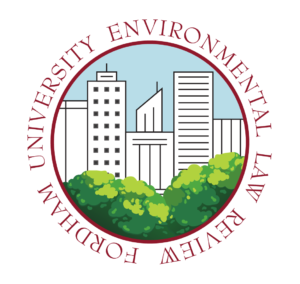The EPA Rejected Stricter Regulations for Factory Farm Water Pollution: What This Means, Where Things Stand, and What You Can Do
Rachel Arone (she/her), Class of 2025
In August, the EPA rejected Food and Water Watch’s petition to revise the Clean Water Act, which urged the EPA to impose greater restrictions on water pollution from factory farms, also known as concentrated animal feeding operations (CAFOs). The petition was filed in 2017; recent litigation alleging unreasonable delay in addressing the petition prompted the EPA’s response.
Instead of revising the Clean Water Act, in 2024 the EPA will designate a subcommittee (labeled Animal Agriculture and Water Quality, or AAWQ) to review and speak to the issue of CAFO pollution.
Extant pollution regulations on CAFOs have been lenient for decades. Section 404 of the Clean Water Act, enacted in 1972, exempts “normal farming” activities from regulation of “dredged or fill” materials polluting navigable waters. Fill materials include manure and waste produced by factory farms (“normal farming” under the Act) discharged into the water. Additionally, the Clean Water Act as a whole does not regulate nonpoint source pollution, which means the majority of runoff pollution from factory farms remain unregulated at the federal level.
More strict regulation of factory farms’ water pollution is increasingly important for the health of our country’s waterways and of the communities who use them. A 2019 study found that factory farm waste pollutes the Maumee River watershed of Ohio, Indiana, and Michigan, contributing to the rapid eutrophication of Lake Erie. The toxic algae bloom growth in Lake Erie periodically renders the water supply unsafe to drink in surrounding communities, shown in 2014’s Toledo Water Crisis.
Since 2005, the Maumee River watershed has experienced a 40% growth in industrial animal farming activity. State regulation has not caught up, and allows farms with thousands of animals to operate without permits, without any regulation of their pollution.
The EPA expects that the AAWQ subcommittee will take 12 to 18 months to yield applicable results and recommendations. Since the review is not slated to start until 2024, it is almost certain that nothing will be done until after the 2024 election, where a change in executive branch administrations may further slow progress.
The EPA should take more immediate action to review factory farm polluters and strengthen pollution regulation under the Clean Water Act. Despite the necessity, expecting the EPA to act so swiftly after six years of avoiding Food and Water Watch’s petition is overly optimistic.
Federal law represents the floor, not the ceiling, for state policy. In the absence of action on the part of federal entities, the states must step in to see quicker action against factory farm polluters. If you want to hold these major polluters accountable in anticipation of federal action, let policymakers in your state know that lax regulations on factory farms polluters will not grant them your vote.

